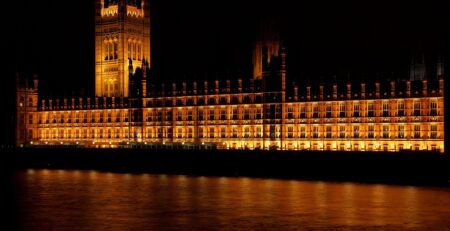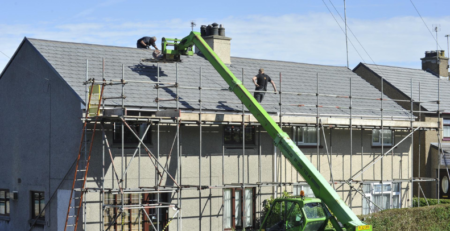New Homes and Buildings in England to Emit Less CO2
To help achieve the UK Government’s target of net zero carbon emissions by 2050, from June 2022, all new homes and buildings in England must produce nearly a third less CO2, the Government announced in December. Since heating and powering buildings account for about 40% of all the UK’s total energy use, the new Government regulations will go a long way towards helping to reduce the UK’s total emissions.
The COP 26 climate change summit in Scotland, October 2021, refocused the world’s attention on humanity’s predicament with climate change. Concrete action is required to meet targets, which the UK Government is attempting to do with recent announcements such as this one requiring 30% less CO2 from new builds. This announcement is in line with the Future Homes and Buildings Standard in 2025.
What’s involved?
The new regulations set out by the Government require that all newly built homes be at least 30% lower in CO2 emissions than existing homes, and 27% lower for other new buildings like offices and commercial retail stores.
The way the Government envisions this being achieved is by utilising “low carbon technology,” such as heat pumps, solar panels, and being more energy efficient with materials use and better insulation to keep heat inside. The Government has also stressed that not only will this be better for the environment, but it will also be greatly beneficial to homeowners and businesses by reducing energy bills, something that is currently on the radar of many people due to energy price hikes.
As well as meeting a 30% carbon reduction target, all new residential buildings must also be designed and built to reduce energy wastage by overheating, which will also help protect vulnerable occupants. Residential buildings include our homes, care homes, and student accommodation.

As well as carbon reduction, these new builds will also factor in the recent pandemic and include better ventilation to help prevent the spread of air-borne viruses.
Commenting on the new Government initiative, Housing Minister Eddie Hughes said:
“Climate change is the greatest threat we face and we must act to protect our precious planet for future generations. The Government is doing everything it can to deliver net zero and slashing CO2 emissions from homes and buildings is vital to achieving this commitment”.
“The changes will significantly improve the energy efficiency of the buildings where we live, work and spend our free time and are an important step on our country’s journey towards a cleaner, greener built environment”.
Investment in energy efficiency
The Government’s initiative to reduce CO2 emissions for new builds is welcome and a win-win for both the environment and consumers. In addition to this, £6.6 billion has been pledged toward investing in improving the energy efficiency of buildings. “The Social Housing Decarbonisation Fund, Local Authority Delivery Scheme and Home Upgrade Grant Scheme make grants available to low-income households for insulation, solar panels, heat pumps and other efficiency and decarbonisation measures.”
On top of this £6.6 billion pledged, a further £400 million is earmarked for hundreds of local authorities. This money is part of the Government’s Sustainable Warmth Competition.
In total, the Sustainable Warmth Competition will divert £430 million in funds to 57 projects in local authorities to help upgrade energy inefficient homes in England that don’t meet the new standards. Absent any further disruptions from the pandemic, starting early in 2022, the aim is to have the projects completed by March 2023.
“Approved Documents”
As well as the new regulations amending the Building Regulations, the Government has also published five new documents”.
One of the approved documents is “Part L” and includes a variety of changes, including an interim uplift to standards that will lead to a 75% reduction in all new homes by the 2025 deadline.
This report It also includes a new standardised compliance report, the Building Regulations England Part L (BREL) report, designed to “ensure a more unified approach by providing building control bodies with the same clear information for every home.”
In accordance with the requirement for improved insulation, all new homes will be tested for airtightness. This contrasts with the current testing for airtightness, estimated by the Government to be about 14% of new builds. The tests that will be used to discern airtightness will include pulse testing and the blower door test.
“Part F” is another document published by the Government which introduces changes to minimum ventilation standards. It also includes guidance for reducing the ingress of external pollutants in areas where air quality standards are not met.
ARE YOU READY TO START INVESTING?
Subscribe to our mailing list now for exclusive deals, investment guides and the latest information from the property market.







